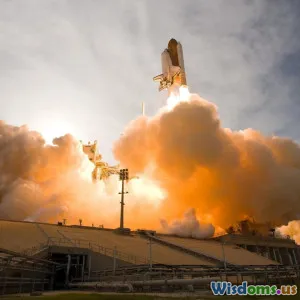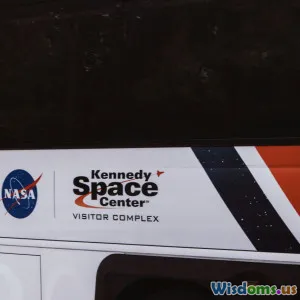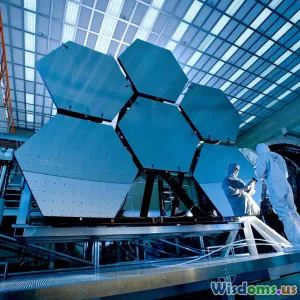
The Surprising Costs Behind Next Gen Space Tourism
10 min read Explore the hidden financial and environmental costs driving next-generation space tourism beyond ticket prices. (0 Reviews)
The Surprising Costs Behind Next Gen Space Tourism
Space tourism has long been the domain of science fiction, but the 21st century has seen a tangible leap toward making this dream a reality. Ambitious companies like SpaceX, Blue Origin, and Virgin Galactic are pioneering commercial ventures that promise customers the ultimate experience: a journey beyond Earth’s atmosphere. While media coverage typically glorifies the incredible thrill and technological breakthroughs, the full spectrum of the costs involved remains largely unexamined. Beyond eye-popping ticket prices, multiple hidden and often surprising costs are shaping this brave new frontier of travel.
Introduction: From Fiction to Financial Reality
Not long ago, the idea of vacationing among the stars felt like science fiction. Today, it’s inching closer to tangible consumer reality. Companies charge hundreds of thousands to millions of dollars for suborbital or orbital trips. Gwynne Shotwell, President of SpaceX, once remarked, “Space tourism is no longer a question of if, but when and at what cost.”
Yet, the advertised prices only tell part of the story. Venture capital, technological innovation, regulatory hoops, environmental concerns, infrastructure development, and safety assurance add layers of expense that few outside the industry fully grasp. Understanding these costs is crucial for gauging space tourism’s feasibility, sustainability, and future accessibility.
The Price Tags Beyond the Ticket
Manufacturing and Engineering Complexities
Building spacecraft capable of safely ferrying civilians requires rigorous engineering that transcends traditional aerospace challenges. Unlike professional astronauts, tourists require adaptable safety measures, extensive training, and reliable comfort amenities.
For example, Virgin Galactic’s SpaceShipTwo employs a unique air launch system necessitating sophisticated materials such as carbon composites, ablative heat shielding, and redundant safety systems. Developing, producing, and iterating these designs demands hundreds of millions in R&D alone. Blue Origin’s New Shepard rocket embodies reusable technology, which dramatically reduces costs per flight but comes with hefty upfront investments over $2 billion spread across its aeronautics program.
Infrastructure Development and Launch Facilities
Launching commercial spacecraft requires not only manufacturing centers but specially designed facilities such as spaceports. The creation and maintenance of these ports—including launch pads, control centers, and passenger terminals—represent substantial capital outlays.
For instance, the Mojave Air and Space Port in California, utilized by Virgin Galactic, has incurred millions in upgrades to support increased flight cadence and reliability. Similarly, Blue Origin is developing facilities in West Texas to accommodate expansive testing and commercial operations. These costs are ongoing, as continuous improvements ensure adherence to evolving safety standards.
Regulatory Compliance and Safety Assurance
Regulatory bodies like the Federal Aviation Administration (FAA) impose strict oversight on commercial spaceflight to ensure passenger safety and manage airspace. These regulations necessitate comprehensive testing, certification protocols, and safety drills that are both time-consuming and costly.
For example, FAA oversight has delayed some ticket sales launches multiple times, reflecting not only the technical challenges but also the financial burden of maintaining compliance. The investment in insurance premiums for passenger payloads also contributes to overall expenses, often priced in tens of millions per flight fleet.
Environmental and Societal Costs
Carbon Footprint and Atmospheric Impact
One of the most surprising and least discussed costs of space tourism is its environmental impact. Rocket engines emit greenhouse gases, black carbon soot, and water vapor directly into the upper atmosphere. Unlike terrestrial pollution, these emissions have disproportionate effects on stratospheric chemistry and climate.
Research published in the journal Earth’s Future highlights that a fleet of suborbital tourist flights could notably contribute to ozone depletion and increase radiative forcing – the warming of the planet. This consideration becomes vital as operators plan to ramp up flight frequencies to meet growing demand.
Economic Inequality and Access
Currently, space tourism is a luxury reserved for the ultra-wealthy, with ticket costs upwards of $250,000 for a relatively brief suborbital hop. Critics argue that despite claims of democratizing space travel, early access deepens disparities in who benefits from technological advancements.
Efforts are underway to reduce costs via reusable rocket technology and mass production systems. Yet, formidable barriers persist. A World Economic Forum report suggests that unless prices fall by two orders of magnitude, space tourism remains more of an elite novelty than a mainstream leisure activity.
Innovations Aiming to Reduce Costs
Reusability and Rapid Turnarounds
The industry’s trump card in slashing expenses lies in recovering and reusing launch vehicles. SpaceX's Falcon 9 rockets have pioneered this with over 200 successful landings to date, drastically reducing hardware wastage. Blue Origin’s New Shepard echoes this by fully reusing crew capsules and booster stages.
Reusability shortens manufacturing cycles and distributes development costs over multiple flights. Economists project this innovation could eventually bring ticket prices down from millions to the sub-$100,000 range.
Mass Production and Automation
Companies are embracing automation in manufacturing to boost production rates and reduce labor costs. SpaceX uses advanced robotics extensively in building Merlin engines and carbon composite parts, enabling lower marginal costs per unit.
An illustrative parallel exists in the automotive industry, where automated assembly lines reduced prices while improving quality. Should aerospace achieve similar breakthroughs, next-gen space tourism could finally become broadly affordable.
Alternative Propulsion Technologies
Research into greener, more efficient rocket fuels promises to mitigate environmental and financial costs. Methane-fueled engines, like SpaceX’s Raptor, burn more cleanly compared to traditional kerosene, potentially shrinking harmful emissions and improving fuel economics.
Experimental concepts such as air-breathing engines may ultimately allow spacecraft to rely less on expensive chemical fuels, cutting operational expenses further.
Cultural and Psychological Investment Costs
Pre-Flight Training and Preparation
Unlike typical vacations, space tourists must undergo preparation regimens involving centrifuge rides, zero-gravity simulations, and health screenings. These sessions translate not only into direct costs but emotional and physical commitments.
Virgin Galactic’s experience package includes multi-day ground training—an expense embedded in the ticket but highlighting that space tours are more physically demanding experiences.
Psychological Impact and Public Perception
The fascination and risks combined produce a unique societal cost. Incidents such as SpaceShipTwo’s 2014 crash reverberate not just in financial terms but in public confidence and industry regulation.
Meghan Cavin, aerospace analyst at Deloitte, noted, “Psychological and reputational risks place a premium on mission perfection, which increases incremental investment demands for safety assurance.”
This factor adds yet another dimension to the ‘cost’—the high stakes involved in reassuring the public and investors alike.
Conclusion: Beyond the Stars Lies Complex Economics
Next-generation space tourism entices with visions of adventure, discovery, and innovation. However, beneath this allure lies a multifaceted network of surprising costs that transcend the individual price tag on a ticket. Manufacturing complexities, infrastructure investments, regulatory hurdles, environmental considerations, and societal dynamics weave together a challenging backdrop.
Understanding these hidden costs enriches our appreciation for the industry’s accomplishments and cautions against underestimating the path ahead. As companies pioneer novel technologies and business models, the convergence of innovation and responsibility will determine whether space tourism remains an exclusive marvel or evolves into a sustainable opportunity accessible to many.
The future of leisure beyond Earth is thrilling—but it comes at a price far more intricate than airtime alone.
Rate the Post
User Reviews
Popular Posts


















